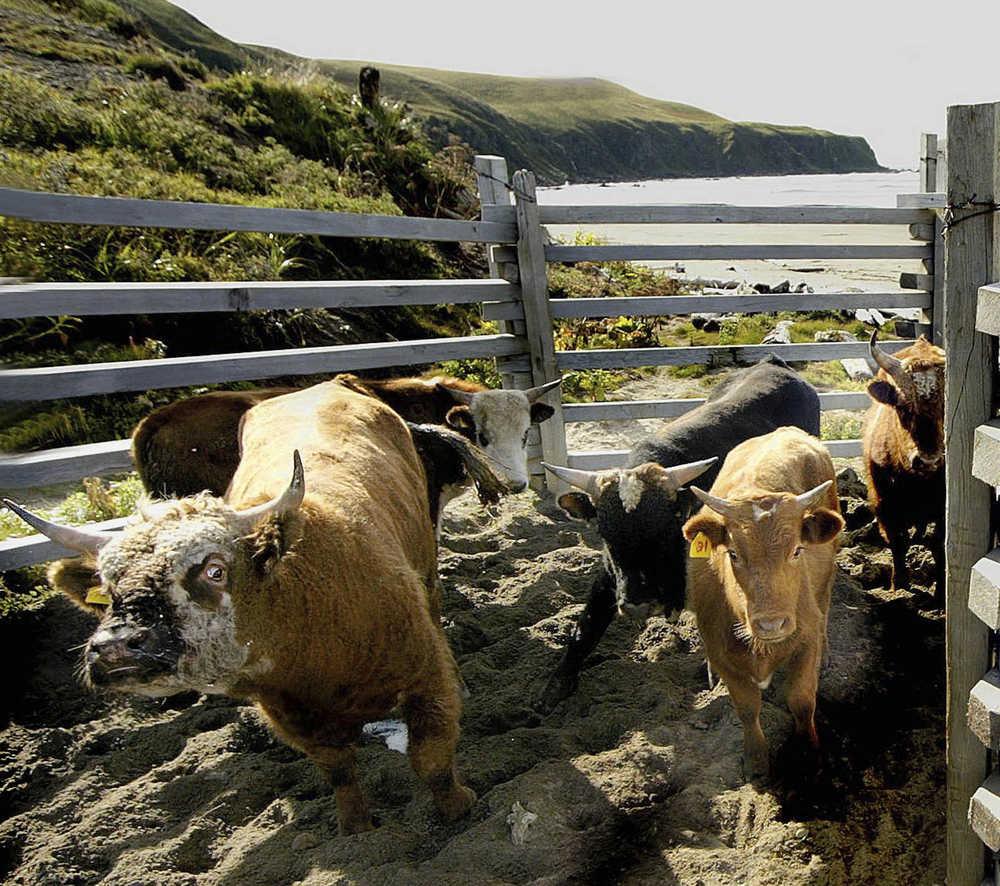ANCHORAGE — U.S. government funding for the possible removal of more than 2,000 feral cattle from Alaska’s Chirikof Island has been suspended for the second time, meaning no money will be available for the long-delayed project until at least April, wildlife managers said Monday.
The Chirikof herd is descended from cattle first introduced to the 29,000-acre island in the late 1880s to provide meat for whaling crews and fox traders. The animals have long gone without caretakers on the remote, uninhabited island.
The prohibition on cattle removal spending was initially imposed in the 2016 federal budget, which ran between Oct. 1, 2015 and ended Sept. 30.
The federal government is currently funded by a continuing resolution through early April 2017 that retains directives embedded in the 2016 spending, so no money can be spent on removing the cattle, said Steve Delehanty, manager of the Alaska Maritime National Wildlife Refuge, which oversees more than 2,000 islands including Chirikof Island.
Also on hold are efforts to remove a smaller cattle heard on Alaska’s Wosnesenski Island.
The refuge has been trying for years to remove the non-native herd from the island because the cattle damage the habitat of native wildlife such as seabirds and salmon.
The refuge was working on environmental impact statements to explore different options for both islands.
“I was pretty proud of the amount of public outreach, you know, really trying to listen to people and their points of view to figure out a reasonable approach to take,” Delehanty said. “That is all ceased.”
If spending is restored to deal with the Chirikof cattle, the refuge will “dust off” the impact statement and release it for public review and comment, he said.
Ideas on what to do about the cattle from the public have included leaving them or some cattle on the island, killing them and taking the meat, removing or sterilizing the animals and introducing predators like bears and wolves to cull the herd. Some people also urged officials to make the meat or genetic material from the unique herd available to the public.
The island could more reasonably accommodate 500 cattle under the current conditions of the island’s land, a range specialist with the USDA’s Natural Resources Conservation Service said in a report following a July 2014 visit to Chirikof, which is about 400 miles from Anchorage.
Designating 30 percent of the island’s available forage area to a smaller number of cows would allow the environment to recover, the specialist’s report said.
Over the years, adventuresome entrepreneurs have added a variety of beef and dairy breeds to Chirikof, resulting in a sturdy hybrid today.
The last rancher to try to make money off cattle on the island was Tim Jacobson, who more than a decade ago attempted to sell the range-fed cows as superior breeding stock.
But his plan did not work because it was difficult to get the cows off the island, which has no natural harbors and is constantly buffeted by unpredictable winds and harsh weather.

